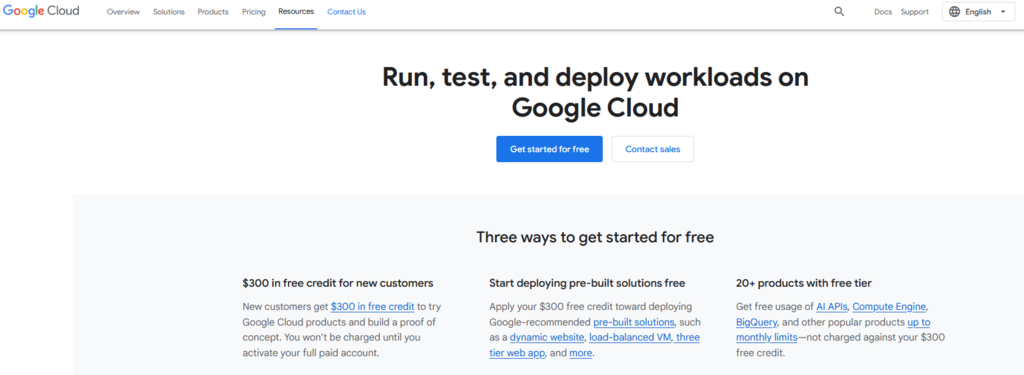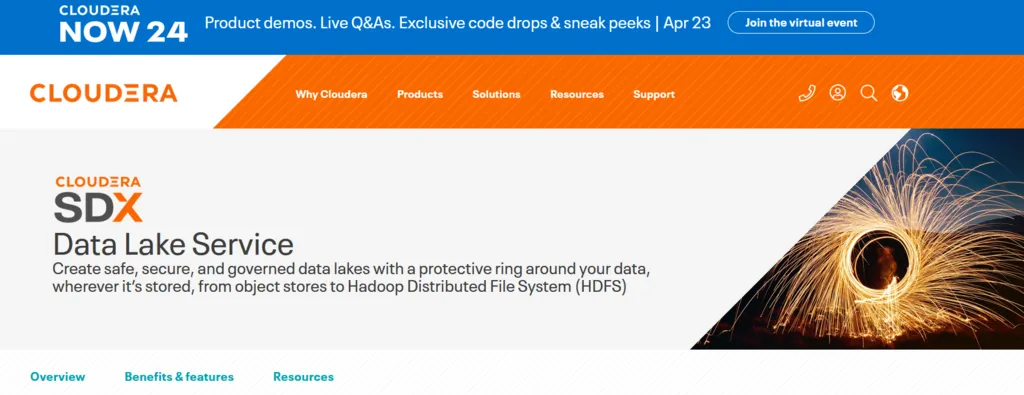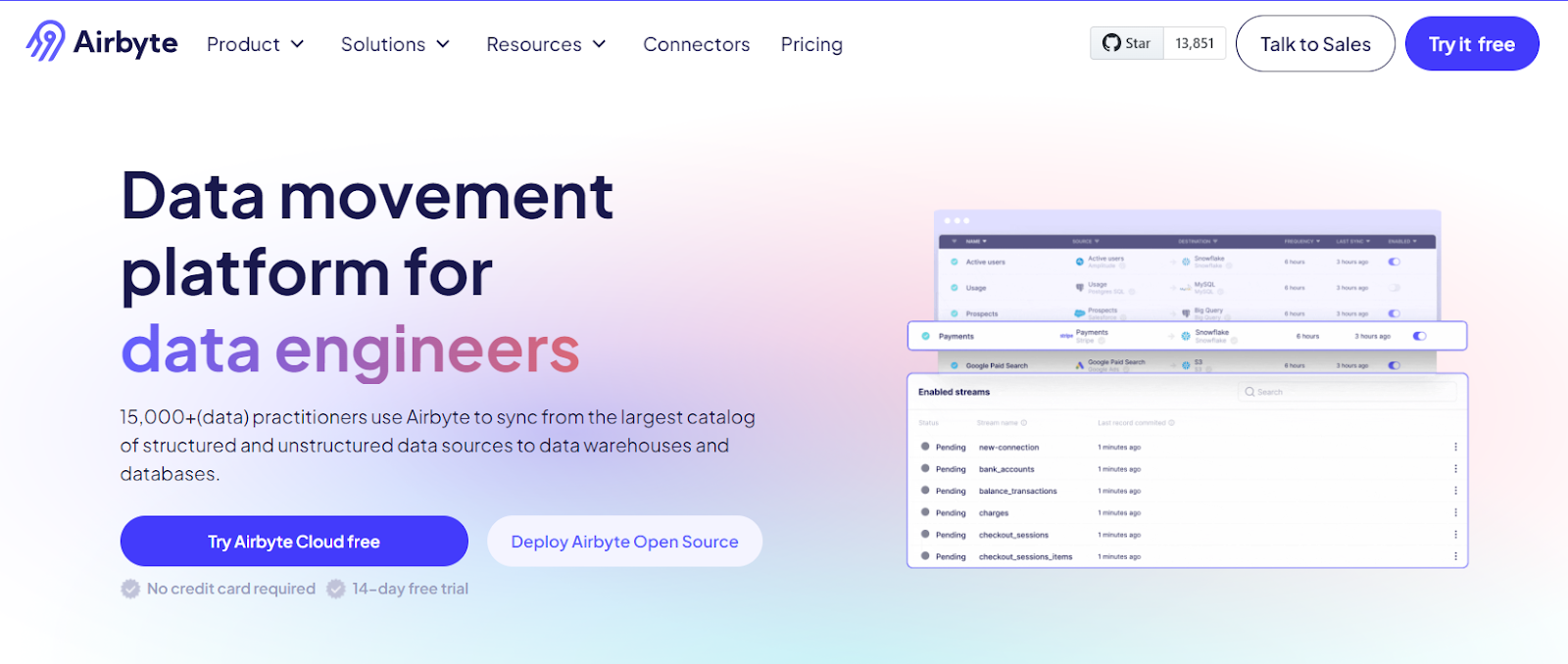What are Data Lakes: Benefits, Uses, and Examples
Summarize this article with:
✨ AI Generated Summary
Data lakes store vast amounts of raw, diverse data using a schema-on-read approach, enabling flexible, scalable, and cost-effective analytics across industries. Modern innovations like lakehouse architectures and open table formats enhance reliability, governance, and real-time processing, while platforms such as Google Cloud Storage, Amazon S3, and Cloudera offer robust, scalable solutions. Efficient data integration tools like Airbyte simplify data ingestion and governance, helping organizations avoid common pitfalls like data swamps and security risks.
- Store structured, semi-structured, and unstructured data at scale with schema-on-read flexibility.
- Lakehouse models combine data lake scalability with data warehouse reliability using ACID transactions and metadata management.
- Key benefits include scalability, advanced analytics, multi-language support, cost optimization, and strong governance/security.
- Common challenges: data governance, security compliance, cost management, and integration complexity; mitigated by automation and best practices.
- Popular platforms: Google Cloud Storage (BigLake), Amazon S3 (Lake Formation), and Cloudera, supporting hybrid and cloud-native deployments.
- Airbyte enables efficient, secure, and scalable data ingestion with extensive connectors, CDC, and flexible deployment options.
Today, huge volumes of data are continuously streaming from multiple sources, such as IoT devices, social media, and other third-party applications. Traditional data-storage methods struggle to cope with the volume, velocity, and variety of this incoming data. Data lakes address these challenges by storing data in its native format and at any scale, while modern innovations have transformed them from simple storage repositories into sophisticated analytical platforms.
Below is a complete overview explaining what data lakes are, their benefits and uses, the latest architectural innovations, implementation best practices, popular platforms, and how to efficiently load data using modern integration tools.
What Are Data Lakes?
Data lakes are centralized repositories that let you store large amounts of data—structured, semi-structured, and unstructured—in its raw, native format. Sources can include social media, transactional systems, third-party collection platforms, and more; formats can range from images and videos to text and log files. Processing can be deferred until the data is actually needed.
Modern data lakes have evolved beyond simple storage to become the foundation of lakehouse architectures that combine the flexibility of data lakes with the reliability and performance of data warehouses. This evolution addresses earlier challenges like data swamps and governance issues while maintaining the core advantages that made data lakes popular.
The key distinction of data lakes lies in their schema-on-read approach, where data structure is applied when the data is accessed rather than when it's stored. This flexibility enables organizations to capture data quickly without predefined schemas, making them ideal for exploratory analytics and machine learning workloads where data requirements may evolve over time.
What Are the Key Data Lake Benefits for Modern Organizations?
The data lake benefits extend far beyond simple storage capabilities, offering organizations a strategic advantage in managing diverse data workloads:
- Flexibility: No need to transform data before loading, enabling quick ingestion of high-velocity streaming data. Modern data lakes support schema evolution and versioning, allowing organizations to adapt to changing business requirements without disrupting existing workflows.
- Scalability: A distributed-computing architecture lets you store and process ever-growing datasets on demand. Cloud-native implementations provide automatic scaling capabilities that handle petabyte-scale workloads while optimizing costs through intelligent data tiering.
- Advanced analytics: Support for real-time analytics, batch processing, AI, and machine learning unlocks deeper insights. Integration with modern frameworks enables everything from traditional business intelligence to advanced AI model training directly on raw data.
- Multi-language support: Work with SQL, R, Scala, Python, and more. Modern query engines provide federated access across multiple data sources, enabling analysts to use their preferred tools while accessing unified datasets.
- Cost effectiveness: Cloud-based, pay-as-you-go pricing eliminates up-front infrastructure costs. Intelligent data lifecycle management automatically moves infrequently accessed data to lower-cost storage tiers, optimizing expenses without sacrificing accessibility.
- Governance and Security: Modern data lakes incorporate enterprise-grade security features, including encryption, access controls, and compliance capabilities. Automated metadata management and data lineage tracking ensure organizational data governance requirements are met without sacrificing agility.
What Are the Latest Architectural Innovations in Data Lake Technology?
The data lake landscape has undergone a significant transformation with the emergence of lakehouse architectures and open table formats that address traditional limitations while maintaining core flexibility advantages.
Lakehouse Models and Unified Platforms
The most significant innovation is the lakehouse model, which combines data lake scalability with data warehouse reliability. This hybrid architecture introduces ACID transactions, schema enforcement, and metadata management directly into data lake environments. Modern implementations use open table formats like Apache Iceberg, Delta Lake, and Apache Hudi to enable database-like functionality while preserving the flexibility to store diverse data types.
These unified platforms eliminate the need for separate data lake and warehouse infrastructures, reducing complexity and costs while improving data consistency. Organizations can now perform both exploratory analytics on raw data and production business intelligence queries within the same environment, streamlining data workflows and reducing data movement.
Open Standards and Interoperability
Open table formats have revolutionized data lake management by providing metadata consistency across different processing engines. Apache Iceberg supports schema evolution and time travel queries, allowing organizations to track data changes over time and recover from errors. Delta Lake provides ACID transactions and concurrent read/write operations, ensuring data consistency in multi-user environments.
These standards prevent vendor lock-in by enabling data portability across different cloud platforms and processing engines. Organizations can leverage best-of-breed tools while maintaining data accessibility and avoiding the constraints of proprietary formats.
AI-Driven Optimization and Real-Time Processing
Modern data lakes integrate artificial intelligence for automated governance, data classification, and quality monitoring. Machine learning algorithms automatically detect sensitive data, suggest optimal partitioning strategies, and identify data quality issues before they impact downstream analytics.
Real-time processing capabilities have evolved to support streaming analytics directly within data lake environments. Integration with event streaming platforms enables organizations to process and analyze data as it arrives, supporting use cases like fraud detection, recommendation engines, and operational monitoring without the latency of traditional batch processing.
What Are Data Lakes Used For in Different Industries?
Healthcare Analytics
Aggregate medical records, lab results, and clinical research data to track disease outbreaks or craft personalized treatment plans. Modern healthcare data lakes support AI-driven diagnostic tools that analyze medical imaging data alongside structured clinical records, enabling precision medicine approaches that improve patient outcomes while reducing costs.
Financial Analytics
Store and analyze massive volumes of transactional and customer data to detect fraud, manage risk, and personalize services. Advanced analytics capabilities enable real-time fraud detection using machine learning models that process streaming transaction data alongside historical patterns and external risk indicators.
Education
Combine data from learning management systems, assessments, and educational research to improve learning experiences, personalize support, and monitor performance. Data lakes enable educational institutions to analyze learning patterns across multiple platforms, supporting adaptive learning technologies and predictive analytics for student success.
Transportation and Logistics
Analyze GPS trackers and traffic-sensor data to optimize delivery routes, reduce delays, and cut transportation costs. Integration with IoT sensors and real-time traffic data enables dynamic route optimization that responds to changing conditions, improving efficiency and customer satisfaction.
What Are the Most Common Data Lake Implementation Challenges and How Can You Avoid Them?
Organizations frequently encounter predictable pitfalls when implementing data lakes, but understanding these challenges enables proactive mitigation strategies that ensure successful outcomes.
Data Governance and Quality Management
The most critical challenge is preventing data lakes from becoming data swamps through inadequate governance frameworks. Without proper metadata management and data cataloging, organizations lose track of data lineage and quality, making it difficult to trust analytical outputs.
Successful implementations establish automated metadata collection and data quality monitoring from the outset. Modern tools provide automated data profiling, schema discovery, and lineage tracking that maintain data governance without constraining ingestion flexibility. Implementing role-based access controls and data classification policies ensures compliance requirements are met while enabling self-service analytics.
Security and Compliance Complexity
Data lakes often contain sensitive information across multiple formats and sources, creating complex security requirements. Organizations must balance data accessibility with privacy protection, particularly when operating under regulations like GDPR or HIPAA.
Effective security strategies implement encryption at rest and in transit, combined with fine-grained access controls that restrict data access based on user roles and data sensitivity. Modern platforms provide automated PII detection and masking capabilities that protect sensitive information while maintaining data utility for analytics.
Cost Optimization and Performance Management
Uncontrolled data growth can lead to escalating storage costs and degraded query performance. Organizations often underestimate the ongoing costs of data storage, processing, and management when planning data lake implementations.
Successful cost management requires implementing data lifecycle policies that automatically move infrequently accessed data to lower-cost storage tiers. Query optimization through proper data partitioning and format selection significantly reduces processing costs while improving performance. Regular data auditing helps identify obsolete datasets that can be archived or deleted to control storage growth.
Integration Complexity and Technical Debt
Many organizations struggle with the complexity of integrating diverse data sources and maintaining reliable data pipelines. Custom integration development can consume significant engineering resources while creating technical debt that becomes difficult to maintain.
Modern data integration platforms provide pre-built connectors and automated pipeline management that reduce development overhead while ensuring reliability. Adopting standardized integration patterns and monitoring tools enables organizations to scale data ingestion without proportionally increasing maintenance requirements.
What Are the Most Popular Data Lake Platforms?
Google Cloud Storage

Google Cloud Storage (GCS) provides cost-efficient, highly scalable object storage that serves as the foundation for Google's data lake solutions. BigLake extends GCS capabilities by enabling multi-cloud analytics and unified governance across different storage platforms.
Key features:
- Robust security: Encryption and fine-grained access control protect sensitive data with automatic classification and policy enforcement.
- Advanced integration: Native support for Apache Iceberg tables enables lakehouse functionality, while tight integration with Dataflow, BigQuery, and Vertex AI streamlines data processing and machine learning workflows.
- Multi-cloud compatibility: BigLake allows querying data stored in AWS S3 and Azure Blob Storage alongside GCS, providing flexibility for organizations with distributed infrastructure.
Amazon S3

Amazon S3 remains the most widely adopted object storage service for data lake implementations, serving as the foundation for AWS's comprehensive data lake ecosystem. AWS Lake Formation provides automated governance and security management on top of S3 storage.
Key features:
- Infinite scalability: Automatically scales storage up or down to match demand with intelligent tiering that optimizes costs based on access patterns.
- Comprehensive integration: Seamless connectivity with AWS services, including Lake Formation for governance, Athena for serverless queries, Redshift Spectrum for warehouse integration, and SageMaker for machine learning workflows.
- Advanced governance: Lake Formation provides automated data cataloging, fine-grained access controls, and compliance management that transforms S3 into an enterprise-ready data lake platform.
Cloudera Data Lake

Cloudera provides a comprehensive data platform that addresses enterprise-scale data management challenges with built-in governance, security, and analytics capabilities. The platform supports both cloud-native and hybrid deployments, making it suitable for organizations with complex infrastructure requirements.
Key features:
- Enterprise governance: Built-in data governance and compliance capabilities, including automated data classification, lineage tracking, and policy management that meet regulatory requirements across industries.
- Comprehensive analytics: Native support for Apache Spark, Hive, and other popular frameworks enables complex analysis workflows, while machine learning libraries support advanced analytics and AI model development.
- Hybrid flexibility: Supports deployment across cloud environments and on-premises infrastructure, enabling organizations to maintain data sovereignty while leveraging cloud-native capabilities.
How Can You Efficiently Move Data into a Data Lake?
Data lakes achieve maximum value when they contain comprehensive data from across your organization. Airbyte provides a robust, open-source data integration platform that simplifies the process of consolidating data from diverse sources into destinations like Snowflake, Amazon S3, or Google Cloud Storage.

Airbyte's platform addresses the complexity of modern data integration while maintaining the flexibility that technical teams require for custom implementations.
Notable capabilities:
- Extensive connector library: Over 600 pre-built connectors eliminate development overhead for common integrations, while the Connector Development Kit enables rapid custom connector creation for specialized requirements.
- Change Data Capture: Advanced CDC capabilities keep sources and destinations synchronized in real-time, ensuring data freshness for time-sensitive analytics and operational workflows.
- Enterprise-grade governance: Built-in security features include end-to-end encryption, role-based access controls, and comprehensive audit logging that meets compliance requirements without sacrificing operational efficiency.
- Flexible deployment options: Choose between Airbyte Cloud for managed services, self-managed enterprise deployments for complete infrastructure control, or open-source implementations for maximum customization flexibility.
- Modern integration patterns: PyAirbyte enables Python developers to work with connectors directly in their applications, while SQL-based transformations integrate seamlessly with dbt for automated data transformation workflows.
- Cost-effective scaling: Transparent pricing models without per-connector fees enable organizations to scale data integration without unpredictable costs, supporting growth from startup to enterprise scale.
Conclusion
Data lakes provide a powerful foundation for storing, managing, and analyzing petabytes of diverse data. Modern innovations like lakehouse architectures and open table formats have transformed them from simple storage repositories into sophisticated analytical platforms that support everything from traditional business intelligence to advanced AI and machine learning workflows.
By understanding the latest architectural innovations and avoiding common implementation pitfalls, organizations can leverage data lakes as strategic assets that enable data-driven decision-making at scale. With modern integration platforms like Airbyte simplifying data movement and governance, the focus shifts from infrastructure management to extracting business value from comprehensive data assets.
Frequently Asked Questions
What is the difference between a data lake and a data warehouse?
Data lakes store raw data in its native format using a schema-on-read approach, while data warehouses store structured data with predefined schemas. Modern lakehouse architectures combine both approaches, providing the flexibility of data lakes with the reliability and performance of data warehouses.
How do you prevent a data lake from becoming a data swamp?
Implement robust governance frameworks from the beginning, including automated metadata management, data cataloging, and quality monitoring. Establish clear data ownership policies and use tools that provide data lineage tracking and automated data classification to maintain organization and accessibility.
What are the main security considerations for data lakes?
Key security measures include encryption at rest and in transit, fine-grained access controls, automated PII detection and masking, regular security audits, and compliance with relevant regulations. Modern platforms provide built-in security features that protect sensitive data while enabling authorized access.
How do data lakes integrate with existing data infrastructure?
Data lakes work alongside existing systems through various integration patterns, including direct querying capabilities, federated analytics platforms, and modern data integration tools. APIs and standard protocols enable seamless connectivity with databases, applications, and analytics tools.
What skills are needed to manage a data lake effectively?
Successful data lake management requires expertise in cloud platforms, data engineering, security governance, and analytics tools. Organizations benefit from teams that understand both technical implementation and business requirements, often supplemented by managed services or consulting expertise during initial deployment phases.

.webp)
.webp)